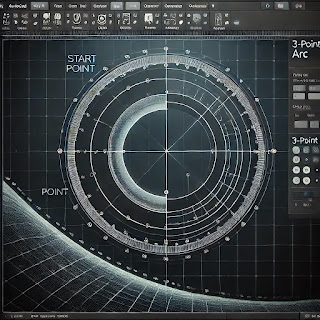Understanding the SARSIAI System: A Guide to Traditional Land Measurement in Pakistan
Land measurement is a crucial aspect of land ownership and property management in Pakistan, where it affects agriculture, real estate, construction, and legal transactions. One of the traditional yet prominent methods of land measurement in the country is the "Sarsai" system, a part of Pakistan’s conventional unit system, particularly in rural areas. Despite the advancement of modern digital measurement techniques, the Sarsai method is still widely used and plays a significant role in land-related activities.
In this post, we will explore the concept of Sarsai, its conversion to modern measurement units, and its relevance in today’s Pakistan.
What is SARSIAI?
The term "Sarsai" is derived from the Persian and local traditional system of measuring land. It is a unit of measurement used in South Asia, especially in rural Pakistan and India.
A Sarsai is essentially a unit within the broader measurement system that includes other units like Kanal, Marla, and Bigha. These units are often employed when measuring agricultural plots, residential properties, or other land areas.
In Pakistan, the traditional measurement system is divided into various units like Kanal, Marla, Ghumaon, Bigha, and Sarsai. These units hold cultural significance and are closely tied to local land ownership practices.
Conversion: Sarsai to Modern Measurement Units
Since Pakistan also uses the metric system and the International System of Units (SI), it’s important to understand how the traditional unit of Sarsai translates into modern land measurement units like square feet or square meters.
Here's a simple breakdown of how Sarsai converts into other units:
- 1 Sarsai = 30.25 square feet (sq ft)
- 9 Sarsais = 1 Marla (1 Marla = 272.25 square feet)
- 20 Marlas = 1 Kanal (1 Kanal = 5445 square feet)
This means that the Sarsai is the smallest measurement unit in many cases, particularly in the real estate sector in rural areas. People often use it for smaller, more specific measurements, such as for plots or specific areas within a larger piece of land.
SARSIAI in Modern Land Transactions
While the metric system is gaining ground in Pakistan, SARSIAI and other traditional measurement units continue to be relevant, particularly in rural areas. This is because:
Cultural Familiarity: Many landowners and farmers in rural areas have used Sarsai and related units for generations, making it easier for them to communicate land sizes using this system.
Ease of Use in Agricultural Lands: For agricultural land distribution and inheritance purposes, Sarsai serves as a convenient unit when breaking down larger plots into smaller portions.
Legal Relevance: Even today, local property deeds and legal documents may mention land in terms of traditional units like Sarsai and Marla. This is especially common in older records.
Challenges of Using Sarsai
While the Sarsai system is historically significant, it comes with some challenges, particularly in today’s world of digitization and standardized measurements:
Inconsistencies: The traditional measurement systems like Sarsai can sometimes vary slightly from region to region, creating discrepancies in land dealings.
Limited Usage in Urban Areas: In urban regions, people are more accustomed to metric measurements, which may lead to confusion during land transactions involving traditional units.
Legal Confusion: As land reforms continue and more modern systems are adopted, relying on older units may complicate legal proceedings unless proper conversions are done.
The Future of Land Measurement in Pakistan
Pakistan is moving toward greater standardization in land records, partly thanks to the introduction of computerized land management systems. While the Sarsai system is still prevalent, especially in rural areas, we are likely to see a gradual shift towards the exclusive use of modern units (such as square feet and square meters) as the country continues to modernize.
For accurate and smooth transactions in the future, it’s important for both landowners and buyers to be familiar with traditional systems like Sarsai as well as modern measurement units. Understanding how to convert between them will ensure that there are no miscommunications during property deals, particularly in regions where traditional units are still commonly used.
Conclusion
The Sarsai system, while traditional, remains an important part of land measurement in Pakistan, especially in rural and agricultural settings. With Pakistan’s gradual shift towards a more standardized land management system, understanding both traditional and modern units is essential for anyone dealing with land transactions. As digital systems evolve, we may see Sarsai slowly fade out, but for now, it remains an indispensable part of the country’s land measurement practices.
Understanding the nuances of both systems will ensure that buyers, sellers, and landowners can navigate Pakistan’s land landscape efficiently.
%20being%20used%20in%20a%20construction%20setting.%20A%20person%20in%20a%20safety%20vest%20is%20measuring%20land,%20.webp)



Comments
Post a Comment